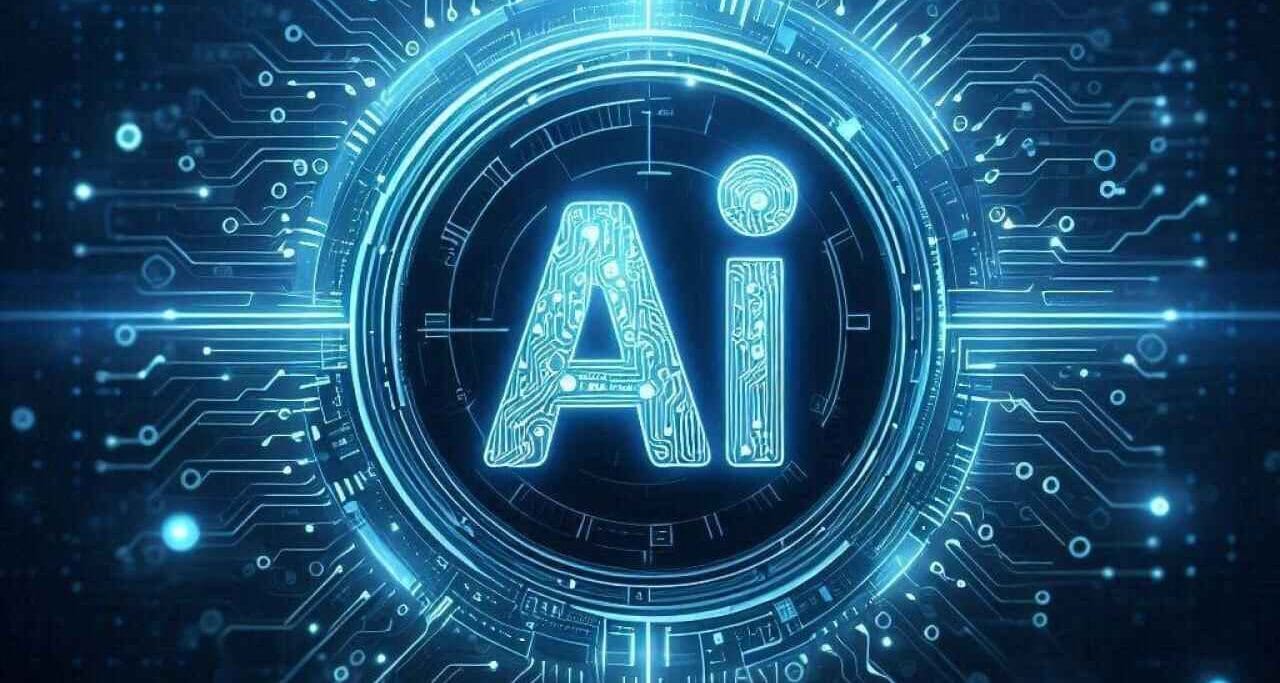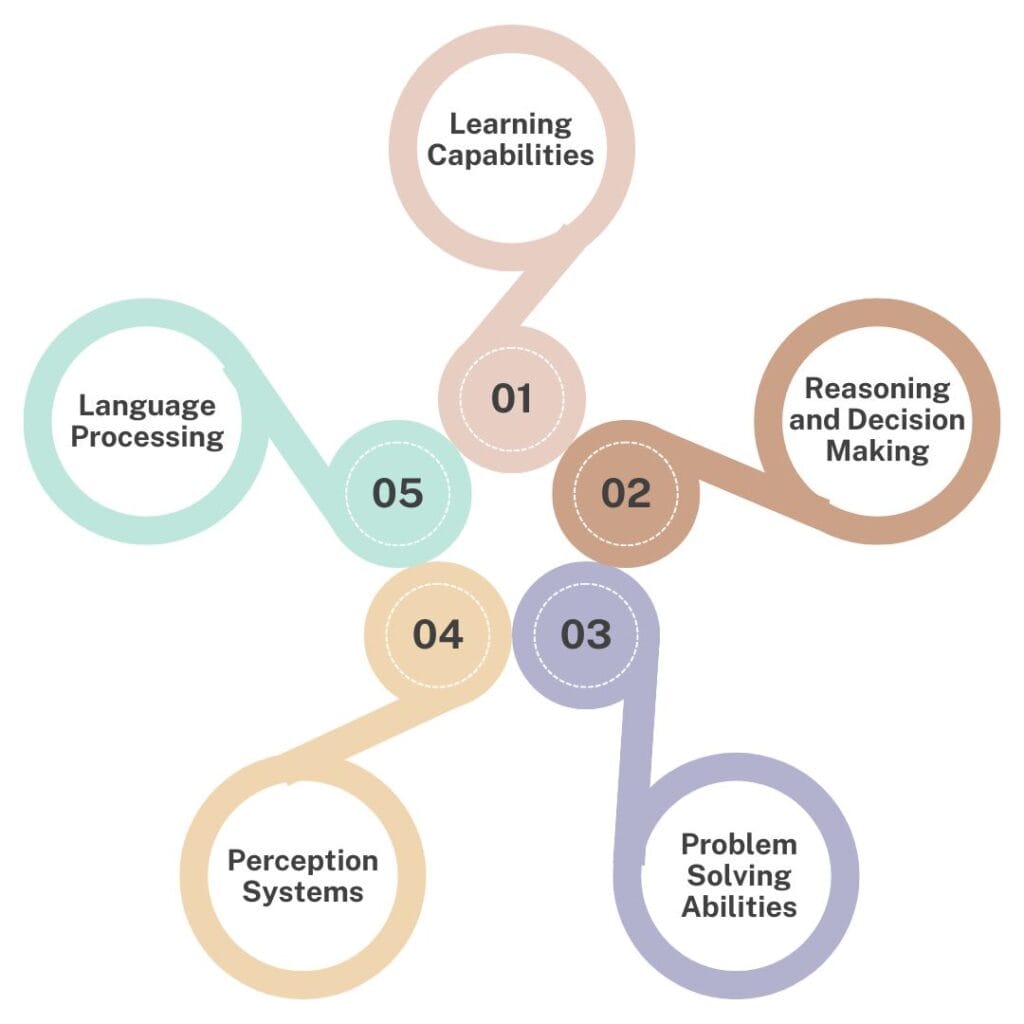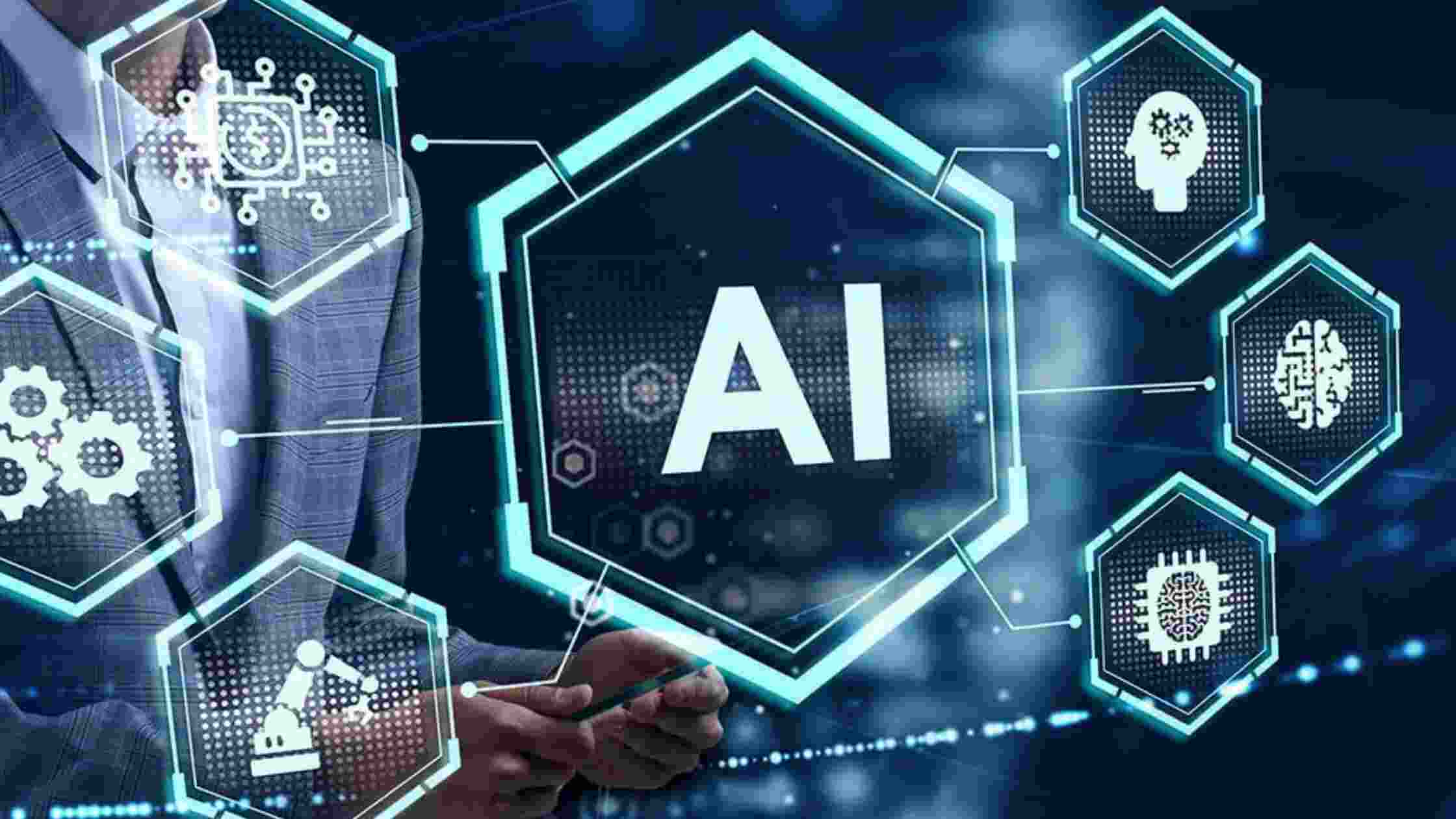Artificial Intelligence is transforming our daily lives in countless ways. From smartphones to self-driving cars, the Components of AI are the building blocks that make these innovations possible.
The components of AI are learning capabilities, reasoning and decision-making, problem-solving abilities, perception systems, and language processing. Each component plays a vital role in making machines think and act intelligently.
In this guide, we’ll explore each AI component in simple terms, helping you understand how they work together to create the smart technologies we use every day. Let’s dive in!
What is Artificial Intelligence?

Artificial Intelligence, or AI for short, is the ability of computers and machines to copy human-like thinking and actions. It’s like giving machines a brain that can learn, understand, and make decisions on their own.
Think of AI as a smart helper that can do tasks that usually need human intelligence. For example, when your phone recognizes your face to unlock, or when Netflix suggests movies you might like that’s AI at work!
The magic of AI happens through special computer programs that can process huge amounts of information quickly. These programs help machines learn from experience, just like humans do, but much faster.
What makes AI special is its ability to improve over time. When you talk to Siri or Alexa more often, you might notice they get better at understanding you. This happens because AI systems are constantly learning from each interaction.
AI isn’t just about robots, though. It’s working behind the scenes in many things we use daily – from spam filters in your email to Google Maps helping you find the best route home. It makes our lives easier by handling complex tasks quickly and efficiently.
How Does AI Work?

AI works like a human brain but with computer power. Let’s break down how AI systems function in simple steps that anyone can understand.
Step 1: Collecting Information
AI starts by gathering data through various sources like cameras, sensors, or digital information. Just like how we use our eyes and ears to learn about our surroundings, AI uses these tools to collect information about its environment.
Step 2: Processing the Data
Once AI has the information, it processes it using special rules called algorithms. These algorithms help AI understand patterns and meaning in the data, similar to how our brain processes what we see and hear.
Step 3: Making Decisions
After processing the data, AI uses its programming to make decisions or predictions. For example, when your phone’s AI recognizes your face, it decides whether to unlock the phone or not based on comparing what it sees with stored information.
Step 4: Taking Action
Based on its decision, AI takes action. This could be anything from unlocking your phone to suggesting products you might like when shopping online, or even controlling the speed of a self-driving car.
Step 5: Learning and Improving
The most important part is that AI learns from each experience. Every time it performs a task, it gets feedback about whether it did well or not. This helps AI improve its future decisions and actions, making it smarter over time.
This continuous cycle of gathering information, processing it, making decisions, taking actions, and learning from results is what makes AI such a powerful tool in our modern world.
What are the Core Components of AI?

Understanding the core components of AI is like learning about the different parts of the human brain. Each component has its own special job, but they all work together to make AI systems smart and useful.
1. Learning Capabilities
Think of this as AI’s ability to learn from experience, just like humans do. When you use Google Maps often, it learns your regular routes and travel times. AI systems can learn through trial and error, memorizing patterns, and understanding from examples.
2. Reasoning and Decision Making
This component helps AI think logically and make smart choices. It’s like when your email system decides which messages are spam and which are important. AI uses two types of reasoning:
- Simple decisions: Like yes or no answers
- Complex decisions: Like choosing the best route during heavy traffic
3. Problem Solving Abilities
This is how AI finds solutions to challenges. Just like how we solve puzzles, AI breaks down big problems into smaller, manageable parts. For example, when a chess-playing AI plans several moves ahead to win the game.
4. Perception Systems
Perception is how AI understands its surroundings. It uses different tools like:
- Cameras for seeing
- Microphones for hearing
- Sensors for detecting temperature or movement
A self-driving car uses perception to spot road signs, other vehicles, and pedestrians.
5. Language Processing
This component helps AI understand and communicate in human language. It’s what makes it possible:
- Chat with virtual assistants
- Voice commands on your phone
- Automatic translation between languages
- Text suggestions while typing
Working Together
These components don’t work alone. They team up to make AI systems useful. For example, when you ask Siri for directions:
- Language Processing understands your question
- Perception checks your location
- Problem Solving finds the best route
- Reasoning decides which way is the fastest
- Learning to remember your preferences for next time
Understanding these core components helps us see how AI manages to perform complex tasks that make our lives easier every day.
What are the 5 Main Branches of AI?

AI has five main branches that work like different departments in a company. Each branch has its own special role in making machines smarter and more helpful. Let’s explore these branches in simple terms.
1. Machine Learning
This is like teaching a computer to learn from experience. Machine learning helps computers get better at tasks without being told exactly what to do. For example:
- Netflix learning what shows you like
- Gmail detecting spam emails
- Shopping sites recommending products
2. Deep Learning
Deep learning is a more advanced form of machine learning. It works like layers of brain cells, helping computers understand complex patterns. You see it in action when:
- Face ID unlocks your phone
- Smart cameras recognize objects
- Virtual assistants understand your voice
3. Natural Language Processing
The Natural Language Process branch helps computers understand and respond to human language. It’s what makes it possible:
- Chatting with Alexa or Siri
- Getting emails sorted automatically
- Having text translated into different languages
- Auto-correct while typing messages
4. Robotics
Robotics combines AI with physical machines. These smart robots can:
- Work in factories making cars
- Help doctors in surgeries
- Clean your house (like robot vacuums)
- Deliver packages in warehouses
5. Fuzzy Logic
This branch helps AI deal with uncertain or unclear situations, just like humans do. It’s useful for:
- Controlling air conditioners to find the perfect temperature
- Managing traffic lights based on traffic flow
- Helping cars brake smoothly
- Adjusting camera focus automatically
Real World Example
Think about your smartphone. It uses:
- Machine Learning to improve battery life
- Deep Learning for face recognition
- Natural Language Processing for voice commands
- Fuzzy Logic for adjusting screen brightness
- Robotic principles for vibration and movement
Understanding these branches helps us see how AI works in different ways to make technology more helpful and human-like. Each branch plays its part in making AI systems smarter and more useful in our daily lives.
Common Applications of AI Components
Let’s explore how AI components are making a real difference in various areas of our daily lives. These practical applications show just how versatile and valuable AI technology has become.
Smart Assistants and Chatbots
Smart assistants like Siri, Alexa, and Google Assistant have become our daily companions.
They use natural language processing to understand our commands and help us set reminders, answer questions, and control smart home devices.
Did you know that over 67% of people prefer using chatbots for quick customer service? These AI-powered assistants are available 24/7 to help solve customer queries.
Autonomous Vehicles
Self-driving cars are no longer just science fiction. They use multiple AI components working together to navigate safely. These vehicles use perception systems to detect road signs, other vehicles, and pedestrians.n
They combine this with problem-solving abilities to make split-second decisions about speed, direction, and safety measures. The learning capability helps them improve their performance over time.
Healthcare Diagnosis
AI is revolutionizing healthcare through accurate and quick diagnosis. Medical AI systems can analyze X-rays, MRIs, and other medical images to detect potential issues.
The reasoning and decision-making components help doctors identify diseases earlier and suggest treatment plans. According to recent statistics, the healthcare AI market is expected to reach 188 billion dollars by 2030.
Financial Services
Banks and financial institutions use AI for fraud detection and risk assessment. AI systems can analyze thousands of transactions in seconds to spot suspicious activities.
They use learning capabilities to understand normal spending patterns and flag unusual transactions. This helps protect customers from financial fraud and unauthorized access.
Manufacturing and Automation
In factories, AI-powered robots are transforming production lines. They use perception systems to handle materials precisely and problem-solving abilities to optimize production processes.
AI also helps predict when machines might need maintenance, reducing costly breakdowns and improving efficiency.
Educational Technology
AI is making education more personalized than ever before. Educational platforms use learning components to understand each student’s pace and style.
They adapt teaching materials accordingly, making learning more effective. AI tutors can provide instant feedback and help students practice at their own speed.
These applications show how AI components work together to create solutions that make our lives easier, safer, and more efficient. As technology continues to advance, we can expect to see even more innovative uses of AI in our daily lives.
Challenges and Limitations
While AI brings many benefits, it also faces several important challenges. Let’s look at the main limitations that affect AI systems today.
Algorithm Bias
AI systems learn from data, but sometimes this data contains human biases about race, gender, or age. When AI learns from biased data, it can make unfair decisions. Companies like Microsoft and Facebook are creating tools to find and fix these biases in AI systems.
Computing Power Requirements
AI needs powerful computers to work well, especially for complex tasks. These special computers and processors are expensive and use lots of energy. Many organizations struggle to get the computing resources they need for their AI projects.
Integration Complexity
Adding AI to existing business systems isn’t simple. Companies often find it hard to make AI work smoothly with their current programs. This makes it difficult for many businesses to start using AI, even when they want to.
Data Privacy Concerns
As AI systems use more data, privacy becomes a big concern. Organizations must be careful about how they collect and use personal information. Companies need to find ways to make AI work well while protecting user privacy.
Implementation Challenges
Many organizations don’t fully understand how to use AI effectively. They need to know which areas can benefit from AI and how to set realistic goals. Training employees and creating clear AI strategies can be challenging for most companies.
These challenges show us that while AI is powerful, it still has room for improvement. Understanding these limitations helps us use AI more effectively and work towards better solutions.
Conclusion
In conclusion, the Components of AI have revolutionized how we live and work. From learning capabilities to perception systems, these building blocks enable machines to think and act intelligently. As AI continues to evolve, it becomes more integrated into our daily lives through smart assistants, healthcare, education, and various industries. Understanding these components helps us better prepare for a future where AI plays an increasingly important role in shaping our world.
FAQ’s
The main components of AI include learning capabilities, reasoning and decision-making, problem-solving abilities, perception systems, and language processing. These work together to make machines intelligent.
Machine learning is AI’s ability to learn from data automatically. Deep learning is a subset of machine learning that uses artificial neural networks to process complex information.
No, AI components typically work together. For example, a smart assistant uses language processing, learning capabilities, and reasoning to understand and respond to requests.
While the basic Components of AI remain similar, their implementation varies based on the application’s purpose and requirements in different industries.
AI components analyze data, recognize patterns, and use logical reasoning to make informed decisions based on programmed algorithms and learned experiences.

